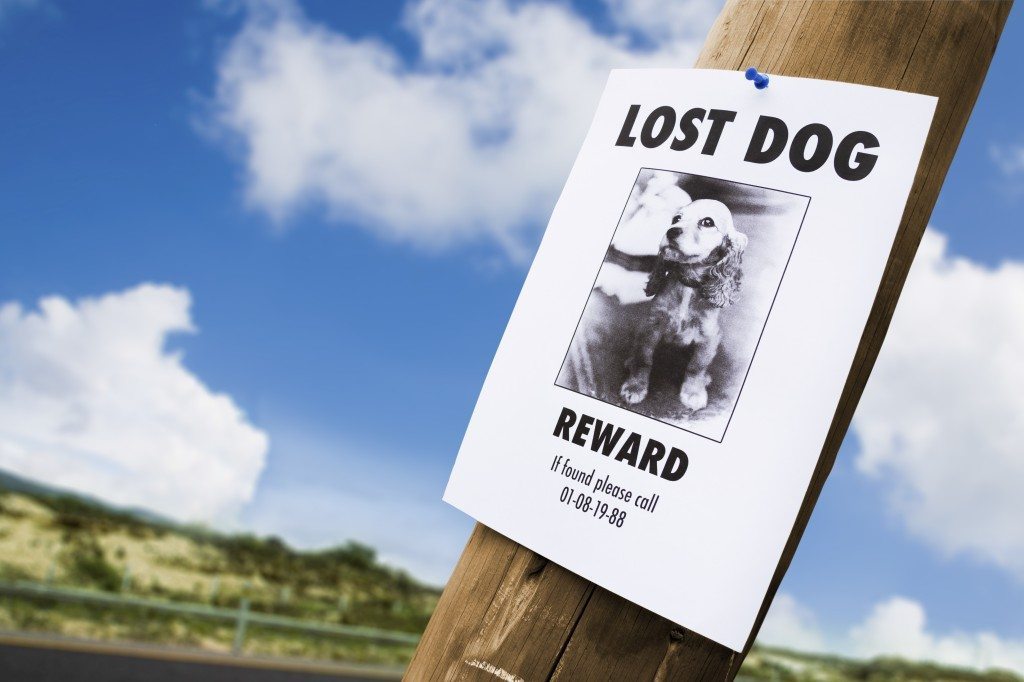The American Humane Association estimates over 10 million dogs and cats are lost or stolen in the U.S. every year. Susan Giordano, Wagbrag’s Dog Training & Behavior consultant, provides the following tips on what to do if you lose your dog.
Tips to help you find your lost dog.
Searching for your lost dog can feel like looking for a needle in a haystack; where could he be?
Don’t give up – the following tips will give you the best possible chances to bring your dog home safe and sound.
- Find the best picture you have of your dog and make a “Lost Dog” poster.
- The words “REWARD” should be at the top of the page in big bold letters; this will get people to slow down and read your poster.
- Keep the remaining information brief; the poster should contain the words “Reward, Lost Dog”, a recent picture or brief description, and your cell phone number. Include the sex of your dog as well. This will help generate more calls
than listing a breed, or age, or the dog’s name. - Go to a Kinko’s type place and make at least a hundred copies. Unless you live in the desert, get some clear
page protectors to protect your posters from rain & moisture. - Now, head out with a staple gun, thumb tacks, some duct tape and a positive mindset, and start putting those posters everywhere. Telephone poles, the poles of street signs, trees that can be seen from the street are good places to begin.
- Ask nearby businesses and veterinarians if you can leave a poster at their register or in the window.
- While you are out distributing posters, talk to people; ask if anyone has seen a dog wandering around and ask if they would keep an eye out for him.
- Depending on your dog, spread your search area to a radius around your home up to 5 miles. If your dog went missing from
somewhere else, make the radius from that location, but put a few near your home as well. - Keep track of where you are distributing the posters; when you find your pup you should go back and clean up the posters.
- Check daily with local shelters. You should call, yes, but you should also go to the shelter(s) every couple of days in
case one of the workers didn’t see your dog come in. Descriptions vary greatly from one person to another, and you know your dog best. If you live within a few miles of a county line, check both county shelters. - Have your dog microchipped. It’s inexpensive, painless and virtually all veterinarians and shelters have a microchip scanner.
- Keep tags on your dog, but if your dog goes missing, the tag may have come off.
Contributing Author: Susan Giordano, M. Ed., CPDT K9U Training and Behavior Modification www.k9utraining.com Photo: Thinkstock










